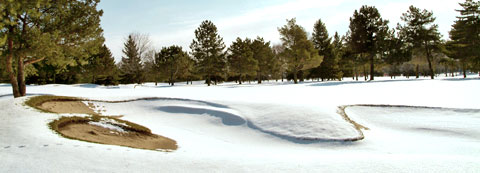Dormant Feeding

Research suggests that the microorganisms responsible for mineralizing the slow-release nitrogen in Milorganite remain active even in frozen soils. This means a dormant application of Milorganite in the late fall, or just prior to freeze up, will work to your advantage all winter and spring. As soon as the soil thaws, the winter-released nitrogen is ready for turfgrass uptake. That nitrogen is responsible for the early spring green up.
The agronomic advantages don’t stop there. Actively-growing turf withstands foot traffic better than turf just breaking dormancy. In addition, recovery from winter injury or snow mold damage can occur more rapidly. This is because nutrients are released earlier, giving turf necessary nutrients to overcome winter damage. In fact, a dormant-fertilized turf breaks dormancy one to two weeks earlier than normal. A dormant application of Milorganite not only helps turfgrass to green-up a week or two earlier in the spring, it also helps turf maintain good turf color and growth rates through mid-May.
The University of Wisconsin conducted a two-year study to evaluate dormant feeding on bentgrass greens. Color response was measured. It was found that microbial activity occurred during winter months, releasing a small amount of nitrogen. This nitrogen was then available to the bentgrass as soon as the soils thaw in the spring. Milorganite significantly improved bentgrass color, and the increase in quality was noted on both well- and poorly-drained greens.
For best results, superintendents working with cool season, northern grasses including Kentucky bluegrass, fescues, and ryegrass should apply 25 pounds (1.5 pounds of nitrogen) of Milorganite per 1,000 sq. ft. on greens and tees after turf quits growing and before a permanent freeze up or snow cover.

